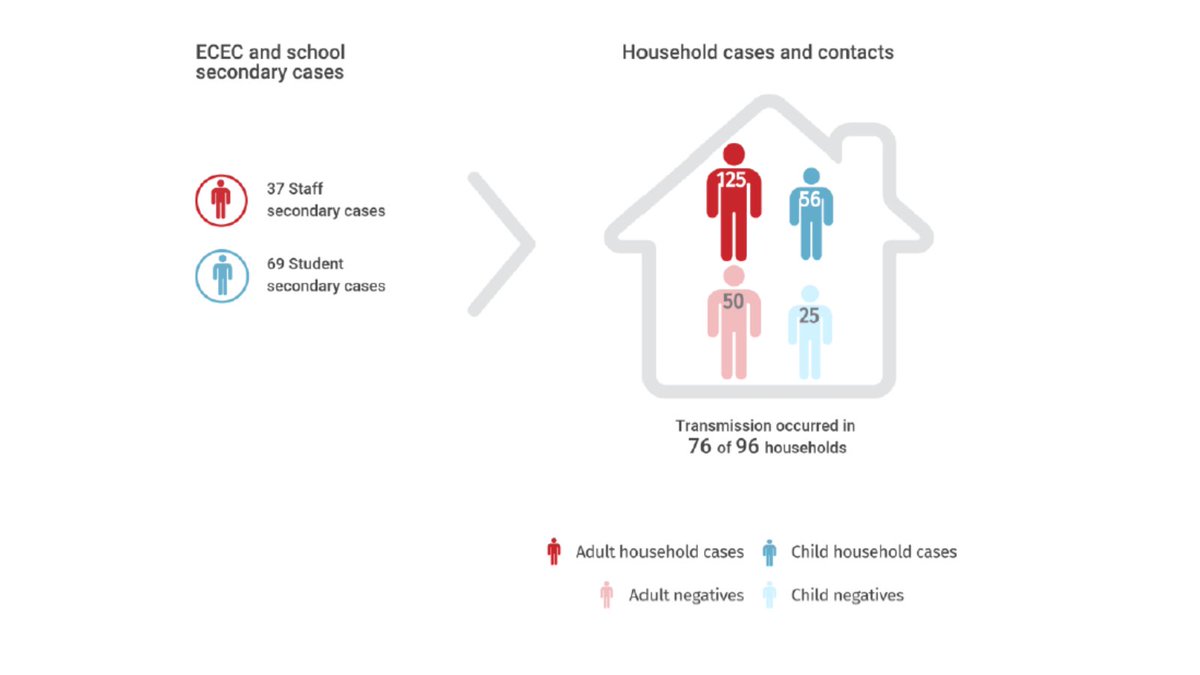
The best data by far on #LongCovid is out from the ONS
For kids, the news is incredibly reassuring - parents minds should be put to rest
Rates of common symptoms after #COVID19 at 12 w for kids are extremely low (0% to 1.7%) compared to controls
ons.gov.uk/peoplepopulati…
1/
For kids, the news is incredibly reassuring - parents minds should be put to rest
Rates of common symptoms after #COVID19 at 12 w for kids are extremely low (0% to 1.7%) compared to controls
ons.gov.uk/peoplepopulati…
1/

Previous ONS statistics have been widely misused, and difficult to interpret due to unavailable methods
This is all put to bed now. Excellent, transparent comparisons with a suitable control group.
Importantly, it includes COVID cases which would be missed by NHS testing
2/
This is all put to bed now. Excellent, transparent comparisons with a suitable control group.
Importantly, it includes COVID cases which would be missed by NHS testing
2/
One statistic stands out
At both 4 and 12 weeks, MORE children aged 2 - 11y in the control group were experiencing symptoms than in those who tested positive for #COVID19
3/
At both 4 and 12 weeks, MORE children aged 2 - 11y in the control group were experiencing symptoms than in those who tested positive for #COVID19
3/

Rates of continuous symptoms going on for 12w were also extremely low for kids aged 2 - 16y who had tested positive for #COVID19 (only around 1%)
This was generally low across the study (3% of COVID +ve vs 0.5% of controls)
4/
This was generally low across the study (3% of COVID +ve vs 0.5% of controls)
4/

Even using a "catch all" term by asking people if they self diagnosed themselves with long covid, rates in children were still extremely low
Especially those with symptoms which impacted daily living (only 1% of children aged 2 - 11y
5/
Especially those with symptoms which impacted daily living (only 1% of children aged 2 - 11y
5/

Despite a huge amount of concern, these statistics back up what we are seeing in practice with kids
Whilst debilitating for those it does affect, #LongCovid is not a huge problem for the overwhelming majority of children who are infected with #SARSCoV2
6/
Whilst debilitating for those it does affect, #LongCovid is not a huge problem for the overwhelming majority of children who are infected with #SARSCoV2
6/
Hopefully soon we can move into more specific nomenclature
Children with isolated anosmia or post viral cough should not be categorised together with children who have the more typically considered "long covid" symptoms of fatigue, brain fog, breathlessness etc
7/
Children with isolated anosmia or post viral cough should not be categorised together with children who have the more typically considered "long covid" symptoms of fatigue, brain fog, breathlessness etc
7/
I should add - there is a zombie statistic going around that 1/7 children get long covid. This is nonsense.
It it based on a complete misunderstanding of the CLoCK study (see thread here)
8/
It it based on a complete misunderstanding of the CLoCK study (see thread here)
8/
https://twitter.com/apsmunro/status/1433068282060365827?s=20
This is because at 12w 30% of children with covid had 3 or more symptoms compared to 16% without covid
Saying that 1/7 had long covid is therefore saying 1/7 of the general population of 11-17yo also have the equivalent of long covid at any one time
Disregard this statistic
9/
Saying that 1/7 had long covid is therefore saying 1/7 of the general population of 11-17yo also have the equivalent of long covid at any one time
Disregard this statistic
9/
• • •
Missing some Tweet in this thread? You can try to
force a refresh







